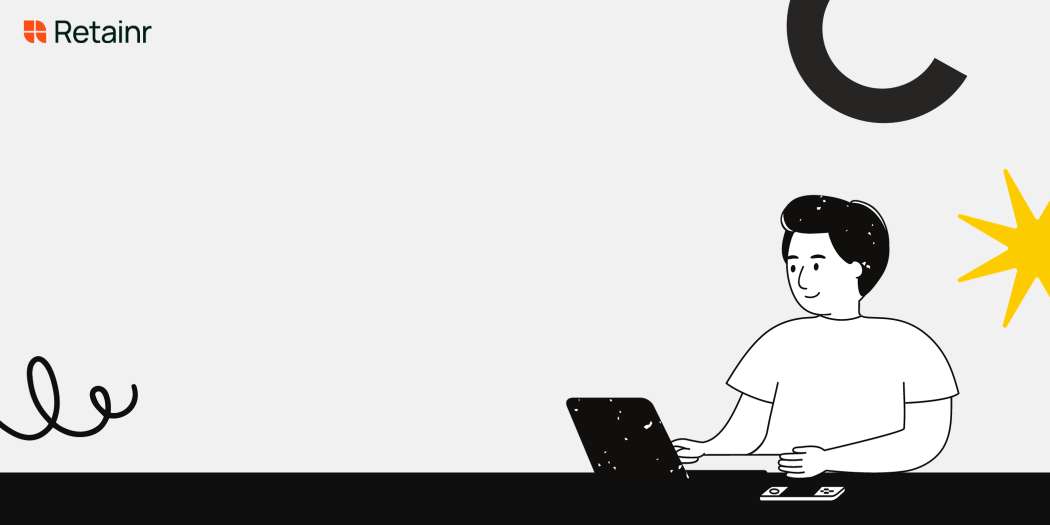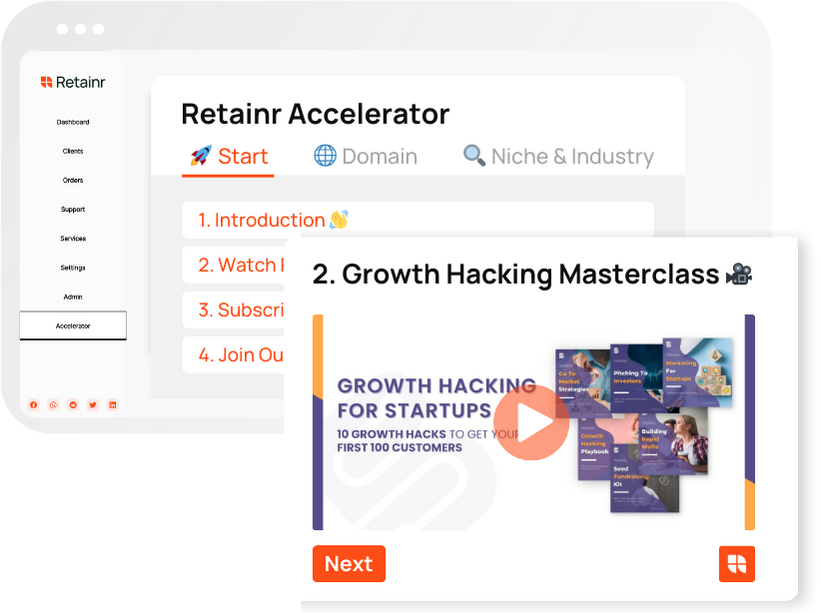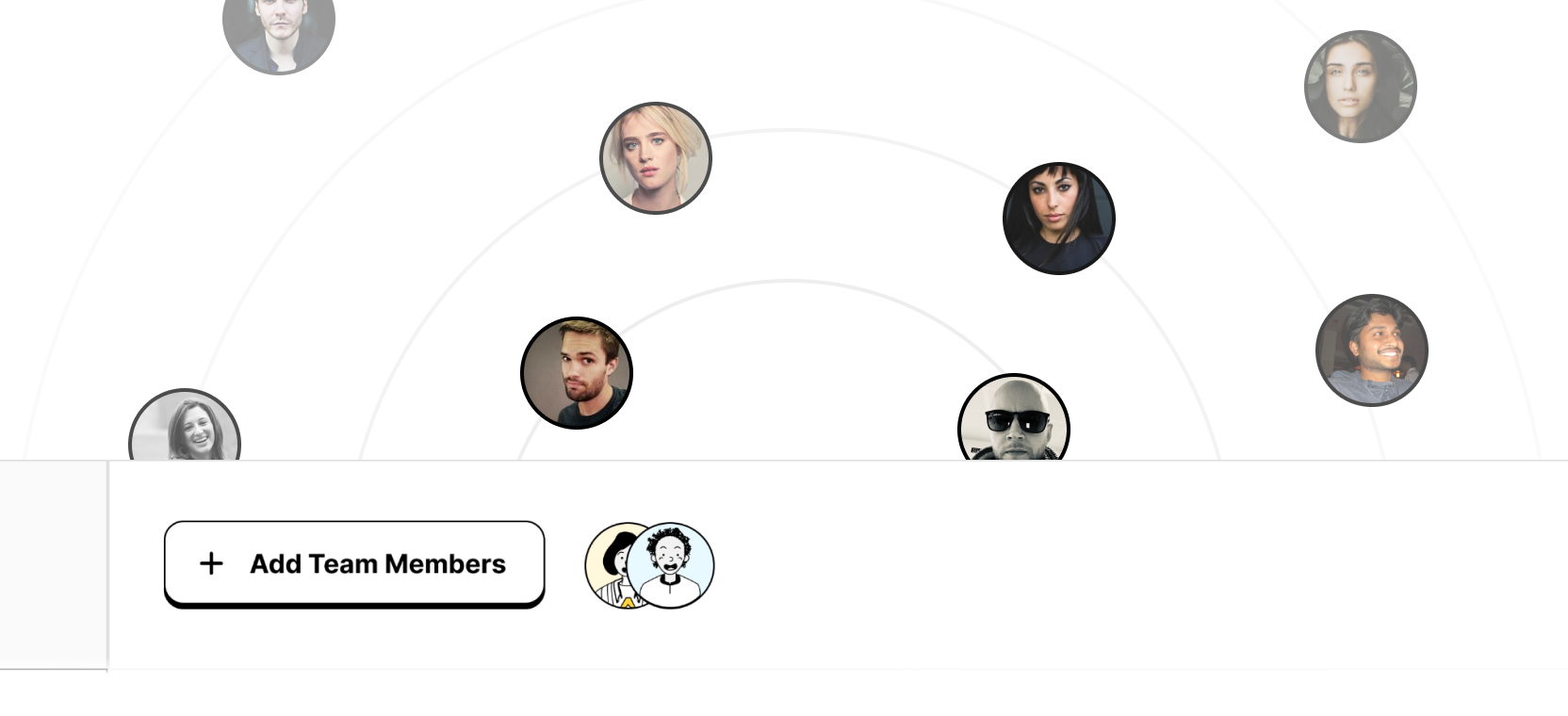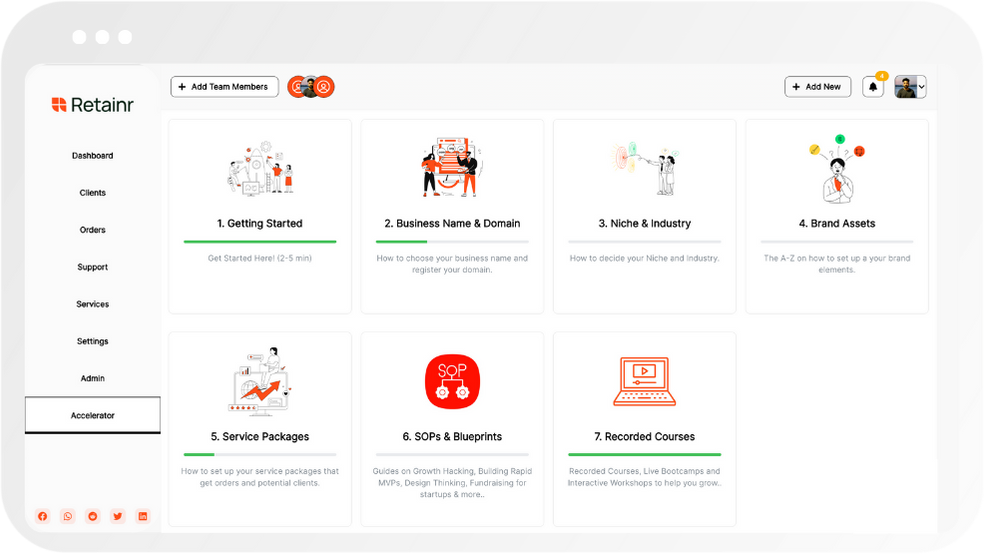
11 Social Media Metrics to Track to Improve Your Conversions
Build with Retainr
Sell your products and services, manage clients, orders, payments, automate your client onboarding and management with your own branded web application.
Get Started1. What are the 11 social media metrics that can improve my conversions?
The 11 Key Social Media Metrics
The improvement of conversions through social media marketing relies heavily on the comprehension and effective application of various metrics. These metrics provide insight into the audience behavior, consequently, paving way for optimization of the conversion process. The fundamental social media metrics include:
- Engagement
- Impressions and Reach
- Followers
- Clicks
- Hashtag Performance
- Sentiment
- Referrals
- Bounce Rate
- Conversions
- Session duration
- Page views
The Influence of Metrics on Conversions
Each of the aforementioned metrics lets marketers track and understand specific aspects of their social media campaigns. For example, engagement measures interactions such as likes, shares, and comments, which shows how much audiences are interacting with your content. Reach and impressions display how many people have seen your post, while followers measure your brand's growth in terms of audience size.
| Metric | Description |
|---|---|
| Clicks | Number of times your linked content is clicked |
| Hashtag Performance | Performance of individual hashtags used in your posts |
| Bounce Rate | Visitors who leave your pages without taking action |
Optimizing Metrics For Better Conversions
The correlation between tracking these metrics and improving conversions is quite direct. By understanding which content types trigger the most engagement, which tweets or hashtags increase impressions, or what drives clicks or follows, brands can tailor future content to replicate previous successes. Furthermore, comprehending factors that contribute to a high bounce rate or a low session duration can assist in making necessary alterations to keep potential customers on the page for longer, improving the chances of conversion.
2. Why do I need to track these 11 social media metrics for my business?
Importance of Tracking Social Media Metrics
Tracking these 11 metrics provides an analytical insight into your social media marketing strategies which are essential for business growth. These metrics offer a comprehensive view of your engagements, conversions, and consumer behavior. In a digitized world where social media platforms are at the core of online marketing, these collected data could make a significant difference in your business trajectory.
Better Decision Making
Data-driven decisions are the lifeblood of successful companies in today's marketplace. The analysis of these vital metrics allows you to:
- Understand the effectiveness of your current marketing strategies
- Identify points that need improvement or complete revamp
- Invest resources in areas yielding the highest returns
- Understand customer behavior and preferences
- Gain perspective over your target audience's interaction with competitors
Influence on Conversion Rate
Tracking these metrics provides you a clear view of metrics which impact your conversion rate. Below is a table elaborating on a few of these metrics and their influence on conversions:
| Metric | Effect on conversions |
|---|---|
| Engagement | Promotes brand loyalty and directly influences purchase decisions |
| Reach | More visibility increases the likelihood of conversions |
| Shares | Higher number of shares equals larger audience, hence, higher prospects of conversions |
| Click-through rate (CTR) | Higher CTR is an indication of quality content attracting website traffic, and higher chances of conversions |
Therefore, by tracking the right metrics, businesses can monitor and control factors directly impacting their conversion rates, leading to more revenue generation.
3. How does tracking social media metrics influence conversions rate?
Understanding the Influence of Social Media Metrics on Conversion Rates
Tracking social media metrics is critical to understanding not only your brand's social media performance but also its potential influence on conversions. There are several ways these metrics can directly and indirectly impact your conversion rate:
- User Engagement: Metrics like likes, shares, comments, and reposts measure user engagement. A high level of user engagement improves your brand's visibility, thus attracting more potential customers and increasing your opportunities for conversions.
- Reach and Impressions: These metrics measure how many users viewed your social media content. The higher your reach and impressions, the higher your potential customer base, and subsequently, the higher your conversion rate.
- Click-Through Rate (CTR): The higher your CTR, the more users are visiting your website via your social media content, thus leading to increased possibilities of conversions.
Examples of Social Media Metrics Tracking Impact
Let's consider hypothetical data for three brands A, B, and C to better understand the influence of social media metrics on conversion rates:
| Brand | User Engagement | Reach & Impressions | CTR | Conversion Rate |
|---|---|---|---|---|
| A | High | High | High | High |
| B | Medium | Medium | Medium | Medium |
| C | Low | Low | Low | Low |
Optimizing Social Media Metrics for Improved Conversions
From the above discussion, it's clear that optimizing your social media metrics is crucial to improving your conversion rates. Here are some strategies to achieve this:
- Boost User Engagement: You can do this by posting relevant, high-quality content and interacting with your audience.
- Increase Reach and Impressions: This can be achieved through strategies like using appropriate hashtags, posting at optimal times, and collaborating with influencers.
- Improve CTR: Making your social media posts more actionable, providing clear call-to-actions, offering incentives for clicking, and optimizing your landing pages can help enhance your CTR.
4. Could you explain how the bounce rate on my social media can affect my conversion rate?
Understanding Bounce Rate on Social Media
Bounce rate on social media refers to the percentage of users who navigate away from your site or content after viewing only one page or post. Essentially, if someone visits one of your social media posts and leaves without interacting further, they contribute to your bounce rate. This metric is crucial because it provides insight into the effectiveness of your content and the user engagement it generates. A high bounce rate usually indicates irrelevant content or unfulfilling user experience.
Impact of Bounce Rate on Conversion Rate
- Higher Bounce Rate leads to Lower Conversion: If your social media posts have a high bounce rate, it negatively impacts your conversion rate because users are not interested enough to explore your brand further or make a purchase. They show little to no engagement with your content.
- Relevance of Content: Bounce rate could signal non-engaging or non-relevant content. If your content is not attractive or relevant to the audience, they are likely to bounce, leading to lower conversions.
- User Experience: Poor user experience is another significant factor contributing to a higher bounce rate. If your site's navigation is complicated or slow-loading content can frustrate users, causing them to leave, thus limiting conversions.
Improving Bounce Rate for Better Conversions
Here are some effective ways to improve your bounce rate so as to boost your conversion rate:
| Strategy | Description |
| Quality Content | Create engaging, quality content that appeals to your target audience to keep them on your page longer. |
| Good User Experience | Ensure that your site or post is easy to navigate and loads quickly. This will enhance the user experience and likely decrease your bounce rate. |
| Effective Call to Action | Employ persuasive and straightforward calls-to-action. When users understand what you want them to do next, they are more likely to engage further, reducing the bounce rate. |
5. How can tracking the engagement rate on my social posts increase my conversion?
Understanding Engagement Rate
Engagement rate is a crucial social media metric that unifies the likes, shares, and comments on your content. It is calculated as the total engagement divided by total followers, multiplied by 100 to get the percentage. This helps you to understand how actively your audience interacts with your posts.
Tracking this metric can provide valuable insights such as:
- The type of content that resonates with your audience, allowing you to focus on producing similar high-performance content.
- How frequent or infrequent your posting should be for optimal engagement.
- The best times to post when your audience is most active.
Engagement Rate and Conversion
A high engagement rate often correlates with a higher conversion rate. This is because the users who are interacting with your posts are likely interested in your brand. Conversions can be anything from making a purchase to subscribing to a newsletter. Here is how it works:
| High Engagement | Lower Engagement |
|---|---|
| People are actively interested in your brand leading to potential high website traffic. | There's less interest in your brand, potentially leading to lower website traffic. |
| Customers are likely to share and recommend your brand, creating a network effect for higher conversions. | Less likely to share or recommend your brand, creating lower implicit endorsements that impact conversions. |
Improving Your Conversion
To harness the power of high engagement for better conversions, you should consider:
- Incorporating strong call-to-actions (CTAs) in your posts that guide your users towards your desired action.
- Providing value to the audience, not just promoting products. This can be informative, entertaining, or inspiring posts.
- Interacting with your audience by replying to their comments or messages. This foster stronger relationships and increases the likelihood of conversions.
6. How do social media conversion metrics differ between platforms like Facebook, Instagram, and Twitter?
Differences in Conversion Metrics Across Social Media Platforms
Each social media platform uses different conversion metrics due to their unique interfaces and user behaviors. With that in mind, the main metrics used on Facebook, Instagram, and Twitter are not the same. Let’s explore this further and understand why the metrics differ.
Facebook's key conversion metrics include Page likes, Post shares, Click-through rates, Impressions, and Conversions. These metrics are largely attributed to Facebook's interface that encourages community building and sharing content. In a table format, the metrics are:
| Metric | Description |
|---|---|
| Page Likes | Number of users who have liked your page |
| Post Shares | How many times your posts have been shared |
| Click-Through Rates | Percentage of viewers who clicked on a specific part of your ad |
| Impressions | How often your ad was viewed |
| Conversions | Users who completed a desired action on a website, after being directed from your ad |
Instagram & Twitter
Instagram mainly focuses on metrics such as Likes, Comments, Saves, Story replies, and Click-through rates. This is mainly because it’s a visual platform encouraging user engagement through visuals. Twitter, on the other hand, measures Retweets, Likes, Replies, and Click-through rates, as it's based on conversation-driven user interaction. The following table explains these metrics:
| Metric | Instagram Description | Twitter Description |
|---|---|---|
| Likes, Comments & Saves | User interactions on a specific post | N/A |
| Story Replies | User replies on a story | N/A |
| Click-Through Rates | Percentage of viewers who clicked on a specific part of your ad | Percentage of viewers who clicked on a specific part of your Tweet |
| Retweets, Likes & Replies | N/A | User interactions on a particular tweet |
7. Can you define 'conversion rate' in the context of a social media campaign?
Understanding Conversion Rate in Social Media Campaigns
The 'conversion rate' in the context of a social media campaign is defined as the percentage of users who take a desired action after interacting with your content on a social media platform. These desired actions could range from signing up for a newsletter, downloading a digital asset, purchasing a product, or any other important key performance indicator (KIP) determined by your business.
Calculating Conversion Rate
You can calculate the conversion rate by dividing the number of conversions by the total number of interactions. This number is then multiplied by 100 to get the conversion rate percentage. The formula is as follows:
| Conversion Rate (%) | = (Number of Conversions / Total Interactions) x 100 |
|---|
Importance of Conversion Rate
Understanding and tracking your conversion rate is essential for the success of your social media campaign. It reflects the effectiveness of your social media content strategy, targeting, and user engagement. A high conversion rate indicates that the content is effectively reaching and resonating with the right audience, hence leading them to perform desired actions. Comparatively, a low conversion rate signals a need for campaign adjustment and optimisation. Through tracking:
- Content Effectiveness: Determine which types of content are most successful in driving conversions.
- Audience Targeting: Identify the demographic and target audience segments driving the most conversions.
- Engagement Monitoring: Keep track of likes, shares, comments, and other forms of user engagement that may influence the conversion rate.
8. How can I link the shares, likes, or comments on my social media to my conversions?
Linking Social Media Interactions to Conversions
To link the shares, likes, or comments on your social media to your conversions , several steps can be undertaken. These social media interactions can serve as active pointers that lead to higher rates of conversion. Let's delve into how this can be achieved.
- Use Analytics Tools: The use of social media analytics tools such as Facebook Insights and Twitter Analytics can help track your social media engagement and link it with your conversions. These tools provide detailed data on the reach of your posts, engagements and clicks, allowing you to identify which posts lead to the most conversions.
- Conversion Tracking: Most social media platforms have inbuilt conversion tracking options in their ad platforms. For example, Facebook Ads Manager allows you to track conversions from your ads. Setting up a conversion pixel on your website can link interactions on your posts with your conversions.
- UTM Parameters: UTM (Urchin Tracking Module) parameters can be added to your URLs shared on social media posts. These parameters indicate where your traffic is coming from and help in attributing conversions to specific posts.
Tying Social Media Interactions to Conversions Using Data
One can also link social media interactions to conversions by carefully analyzing the data from your social media and website analytics. For instance, if a post gets a lot of interactions and subsequently there is a spike in your website visits or sales, you can correlate these two events.
| Date | Post | Interactions | Website Visits | Sales |
|---|---|---|---|---|
| 1/1/2021 | New Product Launch | 500 | 750 | 50 |
| 5/1/2021 | Sale Announcement | 1000 | 1500 | 100 |
Implementing the Link: A Step by Step Approach
Connecting social media interactions to conversions involves a step-by-step process which includes setting up tracking, analyzing the data, making correlations and adjustments. Here's a basic guideline:
- Setup conversion tracking on your website and social media ad platforms.
- Make a spreadsheet to record your social media posts, dates, number of interactions, website visits and sales.
- Monitor and analyze this data regularly to find patterns and correlations between social media interactions and conversions.
- Adjust your social media strategy based on these insights to improve conversions.
9. What tools or software can I use to effectively track these 11 social media metrics to improve my conversions?
Tools for Tracking Social Media Metrics
There are various tools and software that can assist you in tracking your social media metrics to improve conversions. These tools offer insight into your audience's behavior, engagement, and content performance. Here are a few widely used platforms:
- Google Analytics: This free platform allows you to track your website traffic to understand where it's coming from, including social media platforms.
- Hootsuite: It offers a holistic view of your social media performance across multiple platforms.
- Brandwatch: Specifically designed for social media monitoring and listening, Brandwatch helps you track mentions and sentiment relating to your brand.
- Buffer: It's perfect for planning and scheduling your social posts and also offers analysis tools.
Key Features of Social Media Tracking Tools
Each tool varies in their offerings, but there are some key features that effective tracking tools should have. Understanding these features can help you choose the right tool:
| Feature | Description |
|---|---|
| Real-time Monitoring | Updates social media metrics in real-time to keep track of your performance. |
| Sentiment Analysis | Analyses the sentiment behind social media comments and mentions, allowing you to gauge audience perceptions. |
| Reporting and Insights | Generates detailed reports and insights from collected data to aid decision-making. |
| Integration Capabilities | Integrates with other platforms you use, such as CRM or email marketing software for better data sharing. |
Choosing the Right Tool
Choosing the right tool for tracking social media metrics depends on your specific needs and the nature of your business. Keep in mind the different metrics you want to track, features you require, and your budget. By analyzing these aspects, you can determine the best software for tracking your social media metrics and improve conversions.
10. What are some strategies to improve the trending social media metrics to gain more conversions?
Implementing Social Media Strategies
Optimizing your social media strategy is a priority in improving your conversion rate. You can execute a number of strategies to leverage trending social media metrics and drive conversions. Firstly, a consistent posting schedule would help maintain audience presence and engagement. Secondly, implementing A/B testing will allow you to determine which content resonates more with your audience. Lastly, organize social media contests that encourage sharing, likes, comments, or other user interactions.
Engaging with Audiences
Understanding your audience and interacting with them meaningfully can play a strong role in improving conversion rates. Firstly, try responding to comments, and engaging in conversations to strengthen your relationship with your audience. Secondly, listen to your customers’ feedback and suggestions, which can provide valuable insights to adjust your strategy. Lastly, create and share content that your audience may find beneficial or entertaining, which in turn drives shares, likes, and comments.
Social Media Advertising
Investing in social media advertising can significantly boost visibility and engagement. Below is a simplified table that illustrates the different types of ads and their potential reach in different social media platforms.
| Type of Ad | ||||
|---|---|---|---|---|
| Image Ad | High | High | Medium | Low |
| Video Ad | High | High | Medium | Medium |
| Story Ad | Medium | High | Low | N/A |
Conclusion
Understanding Social Media Metrics
Engaging with your audience and improving conversion rates on social media is an essential part of today's digital marketing strategies. You can maximize the effectiveness of this engagement by measuring and monitoring the right social media metrics. This blog post breaks down 11 crucial metrics you should be tracking.
Key Social Media Metrics
The blog discusses a variety of important metrics like engagement rate, reach, impressions, click-through rate, conversion rate, bounce rate, and customer retention rate, among others. Each of these metrics provides valuable insights into customer behavior and helps in refining marketing strategies for better results.
Optimizing Conversions with Retainr.io
Understanding and tracking these metrics can be a complex task. That's where Retainr.io comes into play. Retainr.io is a whitelabel software that can simplify the process for you. It allows you to manage clients, orders, and payments through your own branded app.
With Retainr.io, you can sell more effectively, manage your clients better, and stay on top of your orders and payments, all in a seamless way. It's the perfect tool for businesses looking to simplify their operations while improving conversions.
Improving Conversions with Retainr.io
Retainr.io not only keeps track of all your crucial social media metrics but also helps you interpret them to make informed business decisions. By analyzing these metrics, you can streamline your marketing strategies to better target your audience and increase your conversion rates.
Start working smarter today. Visit www.retainr.io to learn more about how Retainr.io can help your business grow.
Boost Your Agency Growth
with Retainr Accelerator
Uncover secrets, strategies, and exclusive blueprints to take your agency's growth to the next level — from marketing insights to effective presentations and leveraging technology.

SOPs, Cheatsheets & Blueprints
Leverage 50+ SOPs (valued over $10K) offering practical guides, scripts, tools, hacks, templates, and cheat sheets to fast-track your startup's growth.
Connect with fellow entrepreneurs, share experiences, and get expert insights within our exclusive Facebook community.
.jpg)

Join a thriving community of growth hackers. Network, collaborate, and learn from like-minded entrepreneurs on a lifelong journey to success.

Gain expertise with recorded Courses, Live Bootcamps and interactive Workshops on topics like growth hacking, copywriting, no-code funnel building, performance marketing and more, taught by seasoned coaches & industry experts.

.jpg)

.jpeg)


